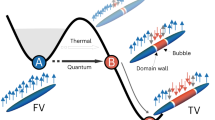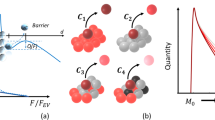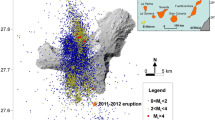Abstract
IN some experiments on the detection of single atoms and molecules reported earlier1, it was noticed that, in the early stages of the conditioning of the point, there were occasions when, on increasing the field by some 20 per cent, an abrupt instability in the field current occurred; this invariably produced excessively large currents. The field emission pattern of the emitting facets of the point, previous to this, was, of course, badly blurred, with no definition comparable with that from clean points, but it was possible to discern ‘out of focus’ non-emitting areas on the fluorescent anode; as soon as the instability arose, there was complete loss of resolution, and the pattern showed a uniform streaming as if a sheet of gas was moving across the point. When the point had been fully ‘conditioned’, it required a much higher field to produce the effect. If, however, the whole vacuum system was let down to air at atmospheric pressure and soon after pumped out, it was possible to obtain repeated gas eruption and current instability without further increase of field.
This is a preview of subscription content, access via your institution
Access options
Subscribe to this journal
Receive 51 print issues and online access
$199.00 per year
only $3.90 per issue
Buy this article
- Purchase on SpringerLink
- Instant access to full article PDF
Prices may be subject to local taxes which are calculated during checkout
Similar content being viewed by others
References
Jacob, L., Nature, 198, 774 (1963).
Modern Theory of Solids, 393 (McGraw-Hill).
Author information
Authors and Affiliations
Rights and permissions
About this article
Cite this article
JACOB, L. Surface Gas Eruption and Van der Waals Cohesion on Tungsten. Nature 205, 584 (1965). https://doi.org/10.1038/205584a0
Issue date:
DOI: https://doi.org/10.1038/205584a0



